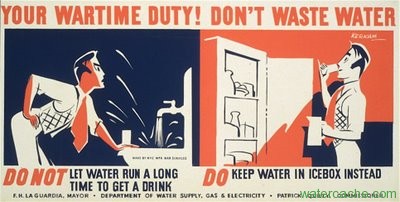I found these water conservation posters online a few years ago and have been holding onto them. Many cities and other organizations create marketing materials to educate people about water conservation. In this day and time, it is strange to think about getting people to conserve water for the good of their nation, particularly for a war effort.
 It is hard to think about anyone rationing or conserving today for a war effort (even though we are presently at war). Today, pleas for water conservation are made for the environment’s sake, your personal footprint sake, or for money saving sake. Read more
It is hard to think about anyone rationing or conserving today for a war effort (even though we are presently at war). Today, pleas for water conservation are made for the environment’s sake, your personal footprint sake, or for money saving sake. Read more











